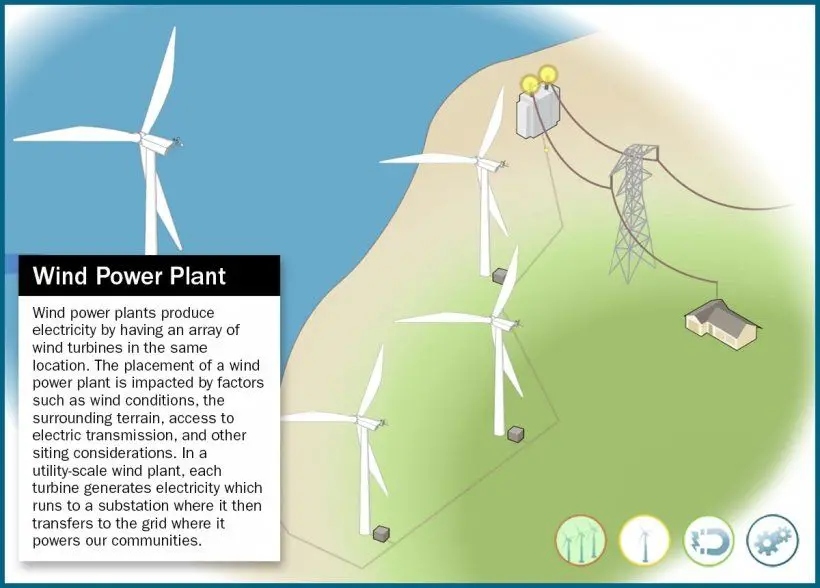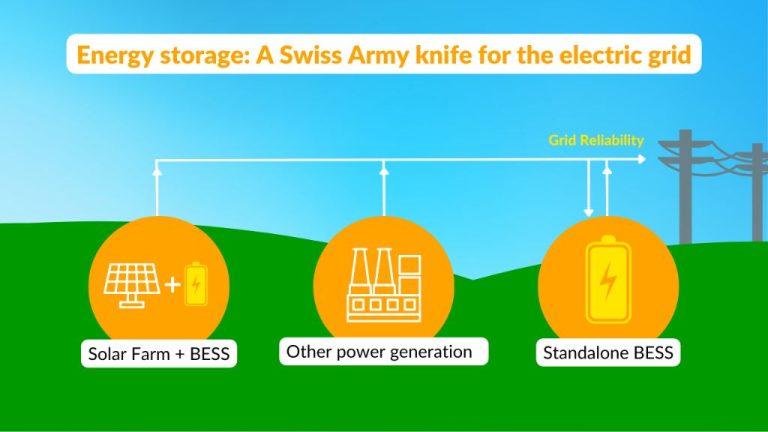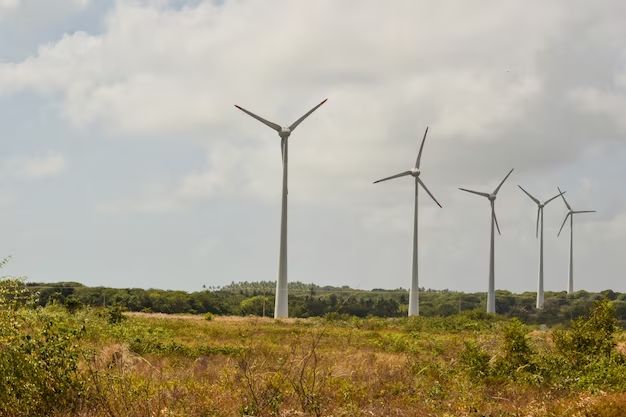Is Renewable Energy Bad For The Environment
The topic of renewable energy has been widely debated in recent times, with many questioning whether it truly benefits the environment or if it is actually doing more harm than good. On one hand, proponents argue that using renewable resources such as solar and wind power reduces our reliance on fossil fuels and helps combat climate change. However, critics argue that the production and use of these alternative energies have their own negative impacts on the environment. In this blog post, we will dive deeper into this controversial issue to determine whether or not renewable energy is bad for the environment. So buckle up and get ready to explore both sides of this ongoing debate!
Is Renewable Actually Worse Than Fossil Fuels? Common Arguments Examined.
The argument over whether renewable energy is worse for the environment than fossil fuels has been a hotly contested topic for some time now. However, a closer examination of the common arguments reveals that the answer is not as cut and dry as it seems.
One of the main arguments against renewable energy is that the production of renewable energy sources requires natural resources and land. For example, the manufacture of solar panels requires a variety of metals and minerals, which can have a harmful impact on the environment. Additionally, wind turbines often require large amounts of land, which can lead to habitat destruction and displacement of wildlife.
While it is true that the production of renewable energy sources does require natural resources and land, it is important to consider the environmental impact of fossil fuels. Extracting fossil fuels involves drilling, mining, and fracking, which can cause significant environmental damage. Fossil fuel use also results in air and water pollution, which can have negative impacts on both human health and the environment.
Another argument against renewable energy is that it is not reliable or consistent. For example, solar panels cannot produce energy at night or during cloudy days, while wind turbines require windy conditions to generate electricity. While it may be true that renewable energy sources are weather-dependent, advances in energy storage technologies and smart grid management systems have made renewable energy more reliable and consistent.
In contrast, fossil fuels are a finite resource that will eventually run out. Additionally, the price of fossil fuels is subject to fluctuations, making them unreliable as a long-term energy source. Investing in renewable energy sources ensures that we have a sustainable and reliable source of energy for future generations.
Finally, some critics argue that renewable energy is too expensive and not worth the investment. While it is true that the upfront costs of renewable energy can be higher than fossil fuels, it is important to consider the long-term benefits. Renewable energy sources can save money in the long run by reducing energy bills and providing energy security. Additionally, investing in renewable energy technology stimulates economic growth and creates jobs.
Weighing Costs Of Production Vs Lifetime Impacts
The issue of whether renewable energy is detrimental to the environment compared to fossil fuels necessitates a deeper analysis of both production costs and lifetime impacts. On the one hand, renewable energy sources require natural resources and land use, specifically in the production of solar panels and wind turbines. However, it is crucial to consider that the environmental hazards associated with the production of renewable energy sources are significantly lower than those of fossil fuels.
The production of fossil fuels involves severe environmental impacts, including habitat destruction, water pollution, and air pollution resulting in respiratory problems, smog, and acid rain. In contrast, renewable energy production does not produce toxic emissions, and the modular nature of renewable energy infrastructure allows for their installation closer to consumption centers, reducing energy transmission losses and costs. Considering the lifetime impact of renewable energy, it presents not only an environmentally sustainable, but also economically viable investment.
While skeptics argue that there are significant upfront costs associated with renewable energy production than fossil fuels, renewable energy infrastructure guarantees long-term benefits. Despite the lifespan of renewable energy systems being around 20 to 30 years, these systems supply consistent energy over their lifetime, making them valuable investments in comparison to fossil fuel systems with limited lifespans, significant health impacts and degradation of the environment.
Additionally, renewable energy infrastructure can operate independently and remain unaffected by price fluctuations resulting from geopolitical tensions or environmental disasters that impact fossil fuel supply chains. Renewable energy infrastructure stimulates innovation, thus creating new employment opportunities, saving on energy bills in the future, and providing energy security that engenders economic growth and overall social welfare.
Focusing On Sustainability Throughout Lifecycles
Focusing on sustainability throughout lifecycles, it becomes increasingly clear that renewable energy sources are unequivocally better for the environment than fossil fuels. The environmental impact of the production and use of renewable energy sources is significantly lower than that of fossil fuels, which result in severe environmental impacts such as habitat destruction, water pollution, and air pollution.
Moreover, renewable energy systems have numerous advantages throughout their lifecycle, making them both an environmentally sustainable and economically viable investment. Despite the higher upfront costs associated with renewable energy production compared to fossil fuels, renewable energy infrastructure guarantees long-term benefits. While the lifespan of renewable energy systems is around 20 to 30 years, they supply consistent energy over their lifetime, making them valuable investments in comparison to fossil fuel systems with limited lifespans, significant health impacts, and degradation of the environment.
Furthermore, renewable energy sources offer unique sustainability benefits throughout their lifecycle by preventing irreversible damage to the environment and human health. They present a closed-loop system that efficiently uses natural resources, reduces waste production, and minimizes greenhouse gas emissions, reducing the overall carbon footprint. This is achieved by reducing reliance on fossil fuels and facilitating the transition to a low carbon economy.
Another significant advantage is that renewable energy infrastructure is not limited to specific regions or areas, meaning it can be installed and operated virtually anywhere. This modular nature of renewable energy infrastructure allows for their installation closer to consumption centers, reducing energy transmission losses and costs. Additionally, renewable energy infrastructure can operate independently and remain unaffected by price fluctuations resulting from geopolitical tensions or environmental disasters that impact fossil fuel supply chains. Renewable energy infrastructure stimulates innovation, creating new employment opportunities and providing energy security that engenders economic growth and overall social welfare.
To conclude, renewable energy is undoubtedly a more sustainable and environmentally friendly energy source than fossil fuels. With the significant advantages of renewable energy systems, it is evident that a transition to a low carbon economy must occur to mitigate the global climate crisis. Investing in renewable energy will not only help fight climate change, but also provide an economically viable and sustainable energy source to promote a healthier planet for future generations.
Debate Over Land Use And Effects On Local Communities
One of the most compelling arguments against renewable energy is that it requires immense amounts of land, which can have negative effects on local communities and the environment. For instance, the construction of solar and wind farms can result in the destruction of natural habitats for wildlife, displacement of indigenous peoples, and a potential decrease in land values.
Moreover, some researchers argue that the development of renewable energy infrastructure can lead to a “boom and bust” cycle, where once the wind farm or solar panel is no longer economically viable, it becomes abandoned, leaving behind rusting metal and unused land. This phenomenon has already happened in some parts of the world, such as Spain, where abandoned solar farms have become a daunting reminder of wasted resources and threats to the ecosystem.
Furthermore, the construction of renewable energy infrastructure can sometimes result in the destruction of historical and cultural sites, which can have a lasting impact on the value and importance of the site for local communities. In some instances, the process of obtaining permits and conducting environmental assessments can create tensions between renewable energy developers and the local residents.
However, it is important to note that the effects on local communities and the environment are not always negative. In some cases, renewable energy infrastructure can create jobs, stimulate local economies, and provide a source of income for local landowners who lease their land for renewable energy production. Additionally, renewable energy sources can reduce the carbon footprint of local communities, leading to cleaner air, water and a healthier environment.
It is also important to recognize that the negative effects of renewable energy production can be mitigated through careful planning and collaboration with local communities. Developers can work with environmental and cultural groups to assess the ecological and cultural significance of proposed renewable energy sites and minimize the adverse effects of their construction and operation.
Role Of Improving Technology In Addressing Challenges
The challenges associated with renewable energy production are not insurmountable, and advancements in technology are playing an important role in mitigating negative impacts and fostering more sustainable environmental practices. For example, the development of more efficient turbines and solar panels is allowing for higher energy production with fewer environmental consequences. Additionally, new battery technologies are being developed to store renewable energy for later use, reducing the need for backup power from traditional sources.
One particularly promising area of innovation is the use of artificial intelligence (AI) to help optimize renewable energy production and minimize negative impacts. AI algorithms can analyze data on weather patterns, energy demand, and environmental impacts to determine the most efficient and sustainable way to produce renewable energy. This can help developers design wind turbines and solar panels that are less disruptive to local habitats and wildlife, as well as reduce energy waste and improve overall efficiency.
Furthermore, precision agriculture and other environmentally-friendly farming practices are being integrated with renewable energy production, creating mutually beneficial synergies between agriculture and clean energy. By utilizing renewable energy sources to power their operations, farmers can reduce their carbon footprint, while also benefiting from the economic opportunities presented by renewable energy.
In addition, the development of sustainable supply chains and waste management strategies are critical to ensuring the long-term viability of renewable energy production. For example, recycling and repurposing of old solar panels and wind turbines is becoming increasingly common, reducing waste and preventing further environmental degradation. Furthermore, the use of locally-sourced materials and labor can help minimize the carbon footprint associated with renewable energy production and support sustainable economic development.
Possibility Of Hybrid Solutions And Importance Of Innovation
Despite the progress made in mitigating negative impacts related to sustainable energy production, some argue that current renewable energy solutions are not enough. They maintain that while renewables are better for the environment than fossil fuels, significant environmental impacts still remain, such as the need for large swaths of land to build solar and wind farms, or disruption of ecosystems caused by altering river flow for hydropower generation. These criticisms have prompted calls for hybrid solutions that bring together different renewable energy sources, as well as for greater focus on innovation to address potential environmental concerns.
Hybrid solutions have the potential to address some of the challenges posed by individual renewable energy sources. By combining solar, wind, hydropower, and other renewable energy sources, hybrid systems can provide more reliable and consistent energy supplies while minimizing their environmental impacts. For instance, a wind farm can generate power when there’s wind, but that energy production can be intermittent. Adding a solar farm alongside the wind farm can take over when the wind’s not blowing. This type of solution reduces the need to build large-scale backup systems that can offer more consistent power supplies. Additionally, energy storage technologies such as batteries and pumped hydro, which capture excess renewable energy for later use, can help overcome any power production hurdles and make hybrid energy systems more practical and cost-effective.
Innovation and technological advances continue to play a crucial role in minimizing environmental impacts of renewable energy systems. Researchers are investigating new materials and technologies such as biodegradable solar panels, 3D-printed wind turbines that can be optimized for specific wind speeds and conditions, and even harvesting energy from ocean waves. These new solutions can help address some of the environmental concerns related to current renewable energy options. For instance, biodegradable solar panels will help prevent the accumulation of waste in landfills or oceans, while the optimized wind turbines can cut down on bird mortality and reduce the carbon footprint associated with turbine transportation.
Moreover, greater investment in research and development of renewable energy technologies will foster more energy innovations and promote the adoption of a broader range of sustainable, environmentally friendly energy sources. It will also provide the opportunity to test, evaluate, and refine these innovative technologies, ensuring they are safe, efficient, and effective. Investment in renewables will also facilitate scaling renewable energy in emerging economies, as well as empower communities to take control of their energy systems and drive the transition to a more sustainable world.

Understanding Nuances And Avoiding Overly Broad Conclusions
When considering the impact of renewable energy on the environment, it is important to avoid making overly broad conclusions. While renewables are generally considered to be better for the environment than fossil fuels, it is important to understand the nuances of different renewable energy sources.
For example, while solar panels and wind turbines are often touted as environmentally friendly, the production and disposal of these technologies can have negative impacts on the environment. Solar panels, for instance, contain toxic materials such as lead and cadmium, and their disposal can lead to environmental contamination if not handled properly. Similarly, wind turbines can be a hazard for birds and bats, particularly if they are sited in areas that are important for migratory species.
However, it is important to note that these negative impacts can be mitigated through better design and management practices. For instance, companies can use environmentally sustainable materials in the production of solar panels, and wind turbines can be sited in locations that minimize their impact on wildlife.
In addition, renewable energy technologies are constantly evolving, with new innovations and materials emerging that can help mitigate their impact on the environment. For example, researchers are working on developing biodegradable solar panels that would break down more easily at the end of their life cycle, reducing the amount of waste generated. Similarly, new technologies for wind turbines can help reduce bird mortality, such as the use of high-tech sensors and cameras to detect when birds are flying near turbines and adjust their rotation accordingly.
Moreover, it is important to recognize that renewable energy technologies are often most effective when used in combination with one another. For example, a combination of solar, wind, and hydropower can provide reliable and consistent energy supplies, while also minimizing the environmental impacts of each individual technology.
Moving Forward Constructively Through Open Dialogue
Moving forward constructively through open dialogue, it is important to acknowledge the advantages of renewable energy over traditional fossil fuels. Renewable energy sources are cleaner, cheaper, and more sustainable in the long-term, helping to reduce air pollution and combat climate change. As the world population continues to grow, investments in renewable energy are critical to ensure a sustainable future for generations to come.
Additionally, while the production and disposal of renewable energy technologies can have negative impacts on the environment, these impacts can be greatly lessened through responsible management practices. For example, recycling programs for solar panels and wind turbines can capture materials and turn them into new products, reducing waste and environmental contamination. Similarly, companies can work to improve the efficiency of their production processes, reducing energy consumption and carbon emissions.
Another important consideration is the potential for renewable energy technologies to create jobs and spur economic growth. According to the International Renewable Energy Agency, the renewable energy sector employed over 11 million people globally in 2018, with the potential to create millions more jobs in the future. Additionally, renewable energy investments can boost local economic activity and provide opportunities for small businesses and entrepreneurs.
Ensuring Access To Affordable, Reliable Energy For All
One of the key challenges facing the world today is ensuring access to affordable, reliable energy for all. While traditional fossil fuels have been the primary source of energy for centuries, they pose a number of challenges, including environmental degradation, resource depletion, and geopolitical tensions. As such, renewable energy has emerged as a promising alternative, offering a range of benefits over traditional sources of energy.
One of the biggest advantages of renewable energy is that it can help to reduce energy poverty, which affects billions of people around the world who lack access to electricity. According to the International Energy Agency, around 940 million people – or 13% of the world’s population – still lack access to electricity. Renewable energy technologies such as solar panels, wind turbines, and hydropower plants can help to increase access to electricity in remote and rural areas, improving quality of life and enabling economic development.
Moreover, renewable energy sources are more reliable and predictable than traditional fossil fuels, which are subject to fluctuations due to geopolitical tensions, price volatility, and supply disruptions. Solar and wind power are abundant and widely distributed, meaning that they can be deployed in a decentralized manner, reducing the risk of major blackouts or energy shortages.
In addition to improving energy access and reliability, renewable energy also has significant environmental benefits. Unlike fossil fuels, which emit harmful pollutants such as carbon dioxide, sulfur dioxide, and nitrogen oxides, renewable energy sources produce no or minimal emissions, helping to reduce air pollution and improve public health. Moreover, investing in renewable energy can also help to mitigate the impacts of climate change by reducing greenhouse gas emissions.
Furthermore, renewable energy investments can have positive economic impacts, creating jobs and spurring local economic growth. According to a report by the International Renewable Energy Agency, the renewable energy sector employed over 11 million people globally in 2018, with the potential to create millions more jobs in the future. Additionally, renewable energy investments can boost local economic activity and provide opportunities for small businesses and entrepreneurs, helping to create resilient and sustainable communities.
Progress Requires Both Renewable Development And Stewardship Of Land
Progress towards a sustainable future requires a balance between renewable energy development and the responsible stewardship of our land and natural resources. While renewable energy can bring significant environmental benefits through reducing reliance on fossil fuels and mitigating climate change, it is essential that we carefully consider the potential impacts on surrounding ecosystems and communities.
For instance, large-scale wind and solar projects can have significant impacts on local flora and fauna, as well as disrupt the natural habitat of certain species. Moreover, building transmission lines and other infrastructure for renewable energy facilities can require clearing forests, disturbing wetlands and other sensitive areas, and consuming significant amounts of water.
However, with careful planning and management, renewable energy development can coexist with nature and minimize its impacts on ecosystems. Many developers are now incorporating ecological considerations into project design, implementing measures such as minimizing land disturbance, using native plants in landscaping, and protecting wildlife habitats. Moreover, some renewable technologies, such as rooftop solar panels and small-scale wind turbines, can be deployed in urban and suburban areas, minimizing their impact on natural ecosystems.
In addition to environmental considerations, it is crucial to engage with local communities and stakeholders to ensure that renewable energy projects are developed in a way that benefits the local economy and social fabric. This includes ensuring that local residents have access to job opportunities and that the projects provide long-term economic benefits to the community.
Finally, it is important to note that renewable energy development should not be seen as a blanket solution to all environmental issues. Rather, it should be combined with efforts to reduce energy consumption through energy efficiency, conservation, and lifestyle changes. By adopting a multifaceted approach to sustainability that incorporates both renewable energy development and responsible land stewardship, we can create a truly sustainable future for all.
No Simple Answers But Hope Through Cooperative Search For Solutions
It is important to acknowledge that the question of whether renewable energy is bad for the environment does not have a simple answer. The responsible development of renewable energy requires careful consideration of the potential impacts on surrounding ecosystems and communities. While the use of renewable resources like solar and wind power can bring significant environmental benefits through reducing reliance on fossil fuels and mitigating climate change, the production and use of these alternative energies also have their own negative impacts on the environment.
Various examples have highlighted the fact that large-scale wind and solar projects can severely impact local flora and fauna, as well as disrupt the natural habitat of certain species. Additionally, building transmission lines and other infrastructure for renewable energy facilities can require clearing forests, disturbing wetlands, and other sensitive areas, and consuming significant amounts of water.
However, with careful planning and management, the adverse impacts of renewable energy can be minimized, and the benefits can be maximized. Many developers are now incorporating ecological considerations, such as minimizing land disturbance, using native plants in landscaping, and protecting wildlife habitats into project design. It is also possible to deploy some renewable technologies, such as rooftop solar panels and small-scale wind turbines, in urban and suburban areas, minimizing their impact on natural ecosystems.
It is crucial to engage with local communities and stakeholders to ensure that renewable energy projects are developed in a way that benefits the local economy and social fabric. This includes ensuring that local residents have access to job opportunities, and that the projects provide long-term economic benefits to the community. Renewable energy development should not be viewed as the sole solution to all environmental challenges. It should be combined with efforts to reduce energy consumption through energy efficiency, conservation, and lifestyle changes. By adopting a multifaceted approach to sustainability that incorporates both renewable energy development and responsible land stewardship, it is possible to create a truly sustainable future for all.
Furthermore, it is important to note that the transition to renewable energy also has significant economic benefits, including job creation and investment opportunities. The renewable energy sector has experienced remarkable growth in recent years, with many countries setting targets for increasing the use of renewable energy. In 2019, the International Renewable Energy Agency (IRENA) reported that renewable energy employed nearly 11 million people worldwide, with the potential to reach 42 million jobs by 2050. Therefore, renewable energy can have a positive impact on both the environment and the economy, provided it is developed responsibly.
Conclusion
In conclusion, the debate over whether renewables are worse than fossil fuels rages on, with valid arguments and concerns on both sides. However, as we have explored in this blog post, it is important to consider all factors when weighing the costs and benefits of renewable energy production versus that of traditional fossil fuels. While it may seem like a simple solution to completely rely on renewables for our energy needs, there are nuanced complexities that must be taken into account. It is crucial to focus not only on short-term impacts but also the sustainability of these options throughout their lifecycles. Furthermore, the effects on local communities and land use cannot be ignored in this conversation. As technology continues to improve and hybrid solutions emerge, we must hold onto optimism and foster a culture of innovation. It is clear that there are no simple answers in this complex issue, but one thing is certain – progress requires both renewable development and responsible stewardship of our land. We must move forward constructively through open dialogue and cooperation in the search for solutions that ensure access to affordable, reliable energy for all. Let us not get caught up in overly broad conclusions or divisive debates, but instead strive towards a future where sustainable energy sources are abundant and accessible for generations to come.







